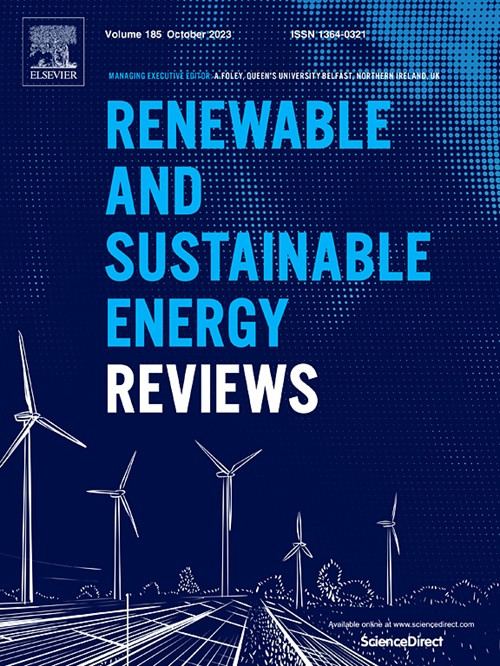阐明盐度梯度能量研究的动力学
IF 16.3
1区 工程技术
Q1 ENERGY & FUELS
引用次数: 0
摘要
本研究使用文献计量学方法、机器学习和数据分析来研究盐度梯度能(SGE),这是一种可再生能源,来自不同浓度的咸水来源,如海水、废盐水和采矿业。SGE使用先进的膜处理技术,有效地从不同水域的盐度差异中提取能量。基于截至2024年1月22日的1270篇文章的数据集,本文将对SGE的科学进展、热门话题、强合作、当前趋势、主要作者、有影响力的文章、重要从属关系、基本统计、常用词汇、情感和情绪进行深入分析,以揭示该领域的质量、数量和影响。自1976年第一篇SGE论文发表以来,SGE研究在过去的20年里引起了研究人员的广泛关注。反电渗析(RED)和压力延迟渗透(PRO)被认为是领先的能量收集技术。然而,近年来,对RED的研究越来越多。中美两国机构对上海交易所的发展贡献更大。“离子流整流”是2023年的热门话题。情绪和情绪得分反映了研究人员对SGE技术的乐观和中性看法。本文章由计算机程序翻译,如有差异,请以英文原文为准。
Elucidating the dynamics of salinity gradient energy research
This study uses bibliometric methods, machine learning, and data analysis to examine Salinity Gradient Energy (SGE), a renewable energy source derived from saline water sources of different concentrations such as seawater, waste brines and mining industries. SGE's use of advanced membrane processes efficiently extracts energy from the difference in salinity between different waters. Based on the dataset collected up to January 22, 2024 that contains 1270 articles, the following in-depth analysis sheds light on the SGE scientific progress, trending topics, strong collaborations, current trends, dominant authors, influential articles, important affiliations, basic statistics, common words, sentiments, and emotions to reveal the quality, quantity, and impact of the domain. Since the first SGE paper published in 1976, SGE research has attracted considerable attention from researchers over the last 20 years. Reverse Electrodialysis (RED) and Pressure Retarded Osmosis (PRO) are identified as the leading energy harvesting technologies. However, in recent years, the number of research studies on RED has increased. Institutions from China and the USA contributed more to the SGE progress. “Ion current rectification” is the trending topic of 2023. Sentiment and emotion scores revealed researchers' optimistic and neutral views on SGE technologies.
求助全文
通过发布文献求助,成功后即可免费获取论文全文。
去求助
来源期刊

Renewable and Sustainable Energy Reviews
工程技术-能源与燃料
CiteScore
31.20
自引率
5.70%
发文量
1055
审稿时长
62 days
期刊介绍:
The mission of Renewable and Sustainable Energy Reviews is to disseminate the most compelling and pertinent critical insights in renewable and sustainable energy, fostering collaboration among the research community, private sector, and policy and decision makers. The journal aims to exchange challenges, solutions, innovative concepts, and technologies, contributing to sustainable development, the transition to a low-carbon future, and the attainment of emissions targets outlined by the United Nations Framework Convention on Climate Change.
Renewable and Sustainable Energy Reviews publishes a diverse range of content, including review papers, original research, case studies, and analyses of new technologies, all featuring a substantial review component such as critique, comparison, or analysis. Introducing a distinctive paper type, Expert Insights, the journal presents commissioned mini-reviews authored by field leaders, addressing topics of significant interest. Case studies undergo consideration only if they showcase the work's applicability to other regions or contribute valuable insights to the broader field of renewable and sustainable energy. Notably, a bibliographic or literature review lacking critical analysis is deemed unsuitable for publication.
 求助内容:
求助内容: 应助结果提醒方式:
应助结果提醒方式:


